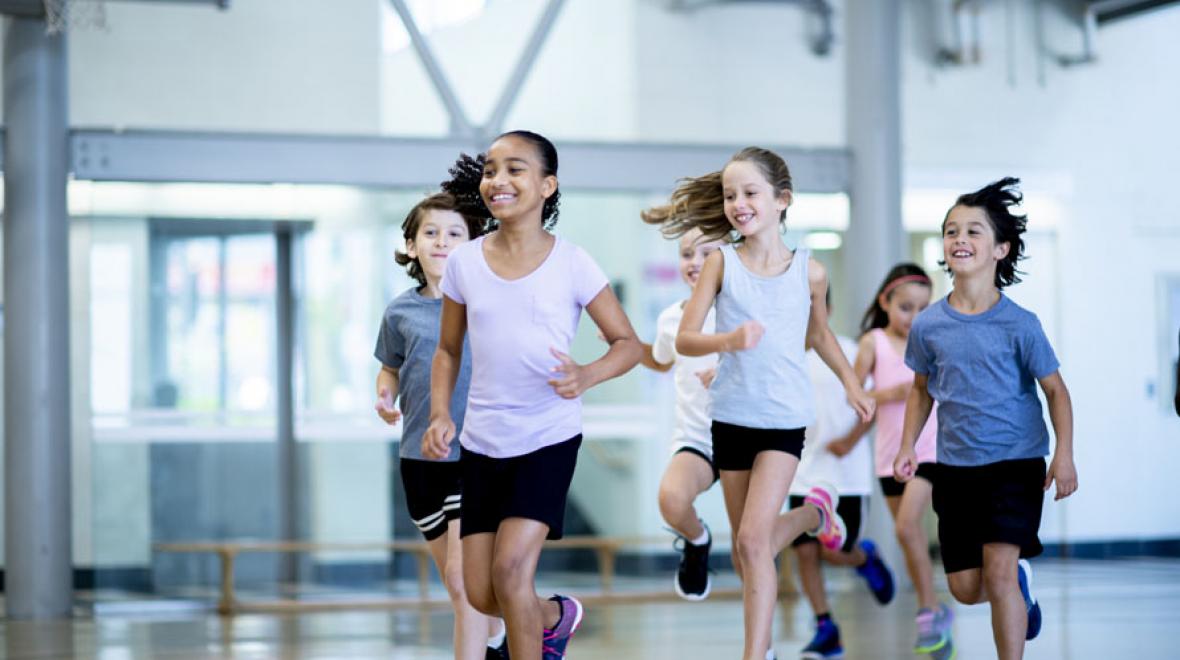
Editor's note: This article was sponsored by Seattle Children's Hospital.
For Pacific Northwest families, recent summers brought lingering wildfire smoke and triggered a slew of shelved outdoor plans. Under ashen, sooty skies, park playdates, swim sessions and even vacations were postponed, rescheduled or relocated. Local youth coaches felt the burn, too, canceling practices and sometimes games due to poor air quality.
Sadly, this season brought more of the same. In an October 2022 report from the National Interagency Fire Center, federal officials noted that “several areas in northwest Washington had not received wetting rains for over forty days, with multiple large fires resulting.”
Taking care to avoid wildfire smoke is an inconvenient, but important, part of protecting kids’ health. When smoke blankets an entire region for days and weeks, children under 18 face special health risks, says sports medicine physician John Lockhart, M.D., of Seattle Children’s Hospital.
Though smoke-related health concerns often center on the very young and very old, middle-school and high-school kids also need extra protection from excessively smoky air, notes Lockhart. Their still-growing lungs and airways face increased risks from inhaling the pollutants in wildfire smoke, including shortness of breath, wheezing, dizziness and worsening asthma.
Other health impacts aren’t visible right away, because pollutants enter the bloodstream, making the body work less efficiently. “Nitrous oxide and carbon monoxide saturate blood cells, making them less able to transport oxygen,” says Lockhart.
Why PNW youth athletes are especially vulnerable
Although the seasonal health hazard of smoky, polluted air isn’t exclusive to the Northwest, we see more wildfire smoke than many other areas of the country. Per the NIFC report, as smoke settles over western Washington and northwestern Oregon this summer, the country’s middle and southern states may experience lower-than-average smoke levels.
Abnormally smoky seasons are particularly hard on the region’s young athletes, who suit up for outdoor summer workouts just as August wildfire smoke arrives. Because vigorous exercise often involves quick, deep breathing through the mouth instead of the nose, pollutants are inhaled deep into the lungs, says Lockhart.
“The respiratory system’s main filter is the nose, and during intense exercise we may bypass that filter. When young athletes breathe polluted air rapidly and deeply through the mouth, it can be a significant trigger for a life-threatening asthma attack,” says Lockhart.
Fortunately, caregivers and coaches can protect athletes from this type of preventable environmental exposure. Here’s how.
Know your numbers
Local air-quality rating agencies like Puget Sound Clean Air Agency, Washington’s Air Quality Advisory (WAQA) and the environmental Protection Agency’s Airnow.gov offer the most current, reliable information about air quality. Check your local air before sending your child to an outdoor practice; children shouldn’t exercise outdoors when the air quality is rated “unhealthy for sensitive groups” (the orange level for both the WAQA and EPA ratings systems).
Unsure of which ratings agency to track? When in doubt, follow WAQA’s guidance. Washington deems air quality “unhealthy” at a lower level than the EPA, making the WAQA rating a bit more protective than others.
Clear the air
Clarify air-quality policies and contingency plans for poor air-quality days with your child’s coach. More youth coaches and trainers are recognizing the importance of protecting athletes’ health by shifting workouts indoors on smoky days, says Lockhart, who last year helped develop an air-quality policy for Seattle Children’s Hospital.
“At Seattle Children’s, we have a large presence in local high schools with our certified athletic trainer programs, and we realized that we needed more procedures in place for poor air quality,” he says. “Having guidelines that we can give to coaches helps create buy-in so there’s less confusion when practices need to be moved or rescheduled.”
Keep meds on-hand
During wildfire smoke season, ensure that kids keep asthma inhalers close during any athletic event, including practices, says Lockhart. “This may not be in line with the school’s policy — they may prefer that medications be kept in the nurse’s office. But this is an instance where athletes need to be able to keep their inhalers nearby.”
Skip the surgical mask
Bandanas, dust masks, or simple surgical masks won’t protect your child’s lungs during outdoor activities. Some public health agencies recommend N95 respirators or P100 masks to block inhaled pollutants, but these aren’t recommended for children or for vigorous activity, because they may impede breathing.
Think inside the gym
When air quality is poor, keep kids safer by moving practices and games indoors. Because indoor air is generally filtered, moving workouts indoors on hazy days is significantly safer than sweating in smoke-filled outdoor air, says Lockhart. The catch is that windows need to remain closed, otherwise there’s little benefit to staying inside.
Smoke circles
Because air pollutants can differ by neighborhood, your area’s air quality might differ substantially from the levels reported on the local news. Personal air quality monitors (such as the AtmoTube Pro) can help track air quality in your immediate area).
But keep in mind that ratings like the WAQA track a number of toxins, including particulate matter (small airborne particles), ozone, nitrogen dioxide (NO2), carbon monoxide (CO) and sulfur dioxide (SO2). A personal air monitor might measure some of these, but not all, so it still makes sense to check air quality ratings and recommendations from environmental agencies.
And, finally, trust your own senses and instincts, says Lockhart. “The rating for downtown Seattle might not be accurate for your area, so use your own common sense. Visible smoke in the air means you’re safer indoors.”
In other words, where there’s smoke, there’s fire. Head inside to wait it out.
Editor’s note: This article was originally published in 2019, and updated in October 2022.












